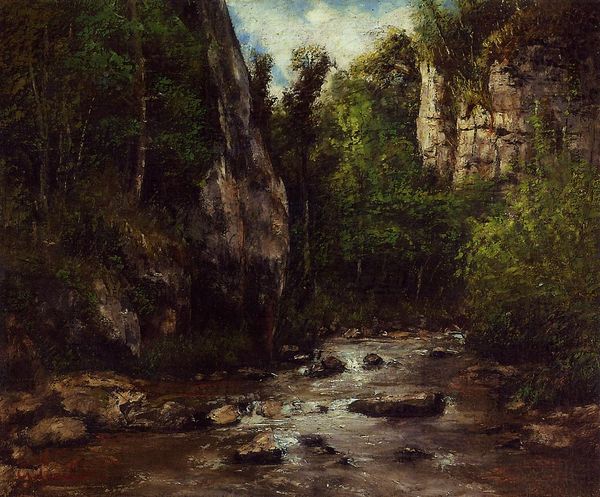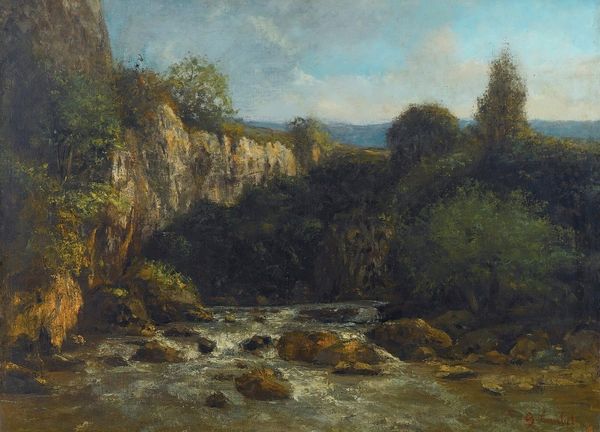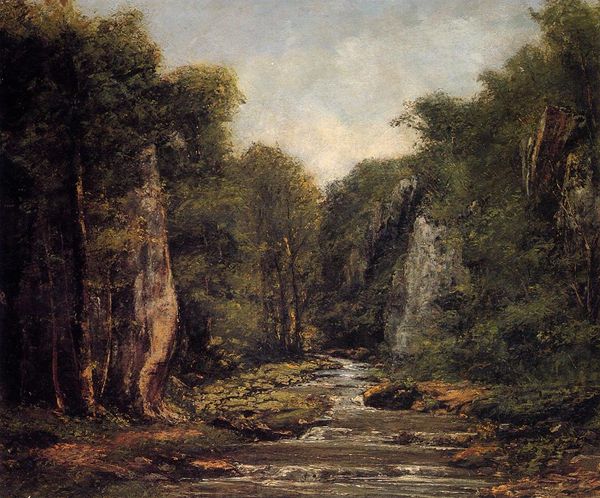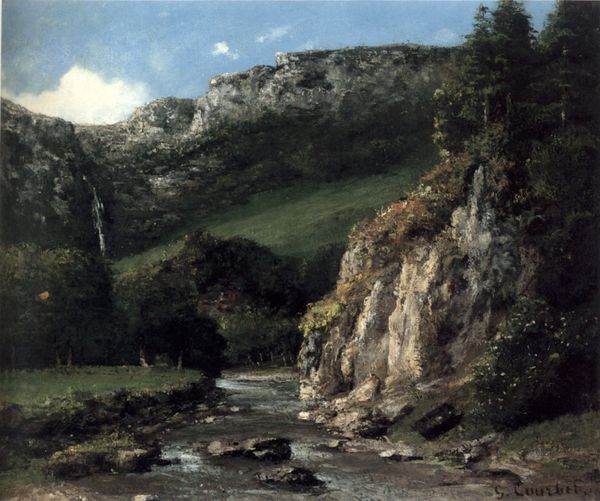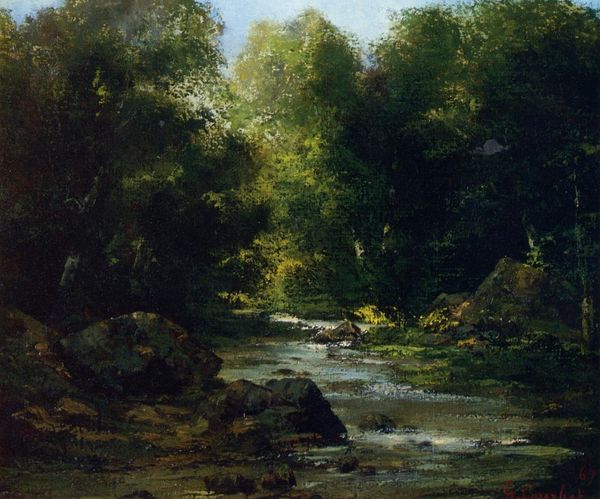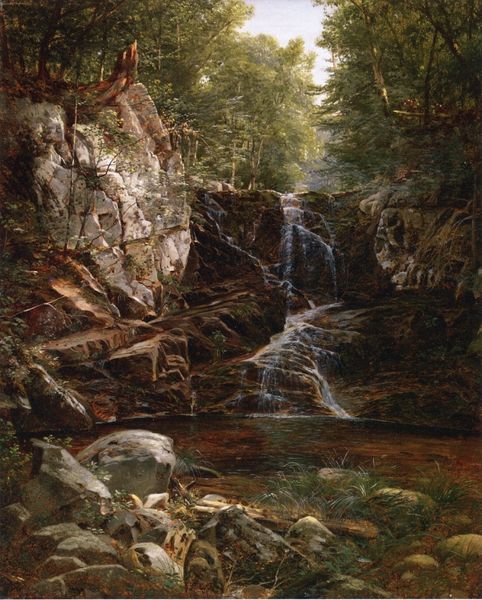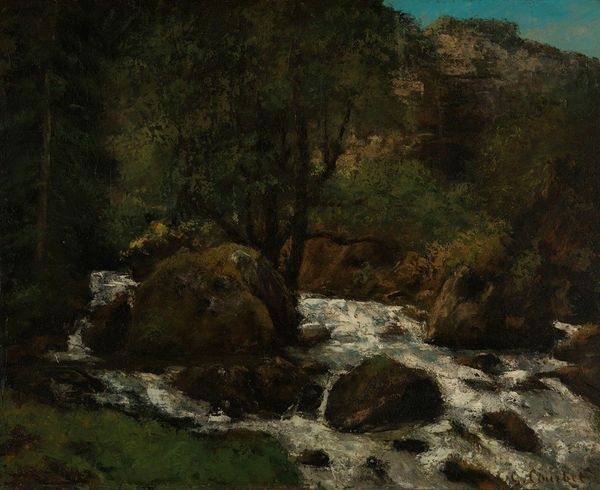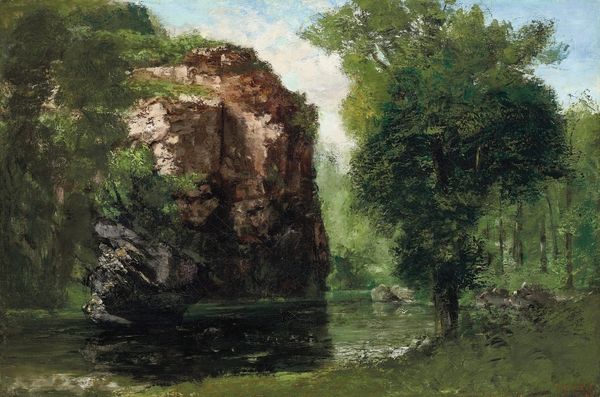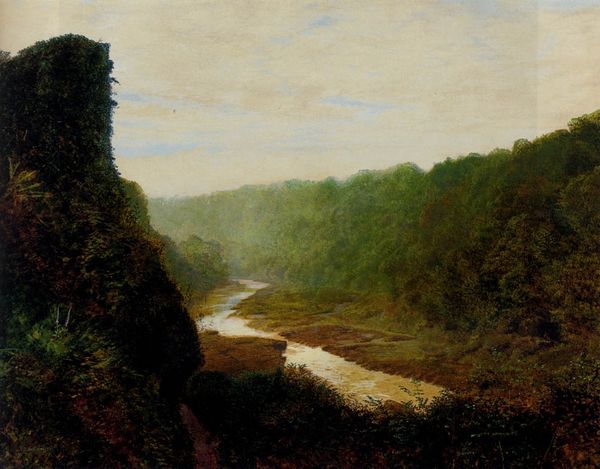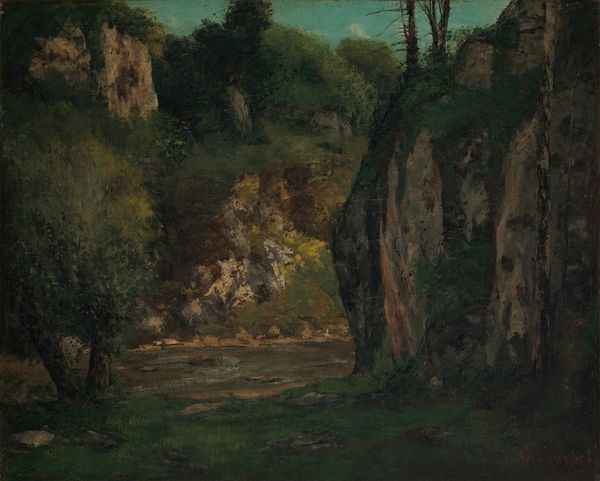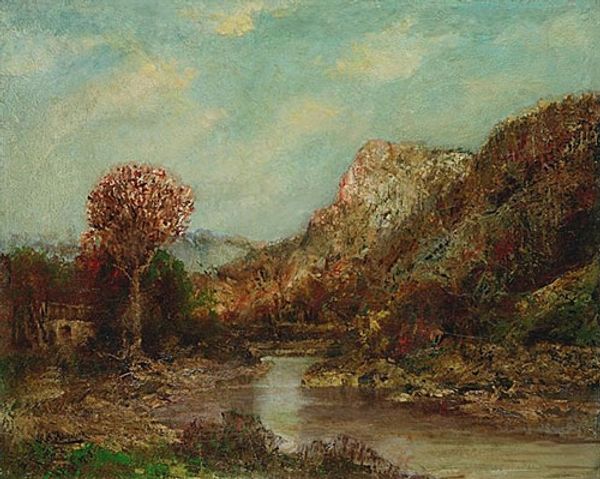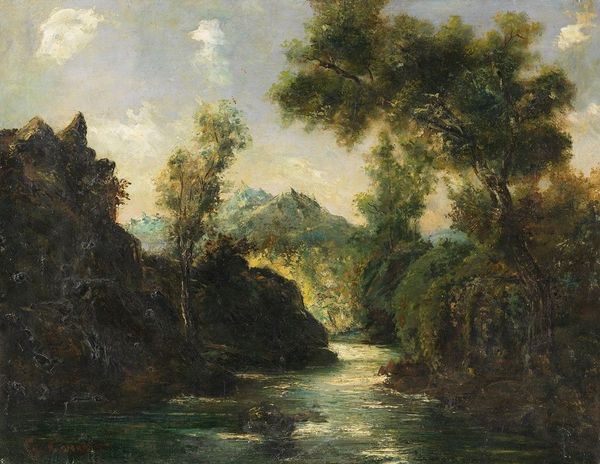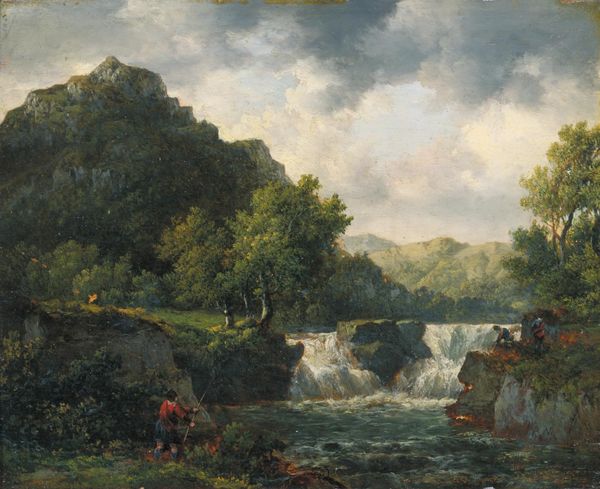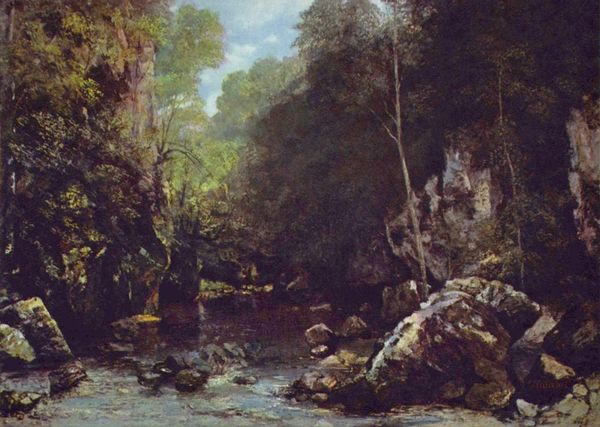
oil-paint
#
oil-paint
#
landscape
#
oil painting
#
history-painting
#
realism
Dimensions: 73 x 92 cm
Copyright: Public domain
Editor: Standing before us is Gustave Courbet’s “Rocky Landscape,” painted in 1862 using oil paints. I find it moody; a bit oppressive almost, due to the dark, looming rocks and thick paint. What can you tell me about the materiality and how that interacts with the cultural context of its making? Curator: Look closely at how Courbet layers the oil paint; it is quite visceral, isn’t it? The texture itself becomes a stand-in for the density of the earth, the unyielding nature of stone. Think about the socio-economic context. This was a time of emerging industrialization. Could Courbet be using the laborious, tactile process of painting to assert the value of physical work, particularly against the rise of machine production? Editor: That’s fascinating! So, rather than just representing a landscape, he's also making a statement about labor and materials through his artistic choices? I see how the thick impasto embodies that sense of manual effort. Curator: Exactly! Consider the pigment itself. Where did it come from? The earth. Courbet isn't just painting *about* the earth; he’s using the earth itself as his medium. It collapses that distinction. Do you see how that blurs the traditional boundaries between high art and the crafts or more practical earth-workings? Editor: It does! I was initially focused on the somber atmosphere, but now I’m noticing how Courbet transformed this earth through his work. It’s not just a scene, it's an embodiment of making and the raw materiality of the land. I wouldn’t have caught that on my own! Curator: Art invites us to think differently, always returning to the labor, processes, and material origins that shape it, not just its superficial image.
Comments
No comments
Be the first to comment and join the conversation on the ultimate creative platform.
